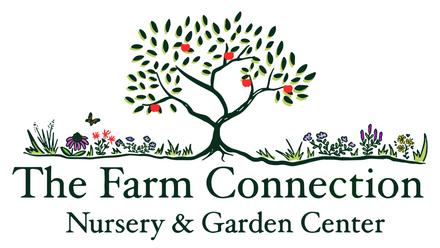Fall isn’t just for planting, it’s also the season to focus on soil. With cooler air, steady rainfall, and warm soils, fall is the perfect time to feed the earth that feeds your plants. Soil life is active long into the season, and the amendments you add now will have all winter to settle in, break down, and be ready for spring growth.
Healthy soil is the foundation of a thriving garden, and fall is the time to build it.
Shifting Nutrient Needs
A plant’s NPK (Nitrogen-Phosphorus-Potassium) needs change with the season. Spring calls for nitrogen to fuel leafy growth, but fall is different. This is the time to focus on phosphorus and potassium:
- Phosphorus drives strong root growth.
- Potassium builds resilience and stress tolerance.
- Nitrogen should be kept light, too much now pushes top growth when plants need to slow down.
This shift is why fall fertilizing looks different from spring. You’re feeding roots, not leaves.
Building Soil Health Now
Fall is an excellent season to add organic matter and slow-release nutrients that will break down over the winter months. Some staples we recommend include:
- Bone meal and rock phosphate for phosphorus.
- Thorvin kelp for potassium and trace minerals.
- Our in-house custom Fall Remineralizing Blend, mixed each year for the needs of WNC soils.
- Feather meal and blood meal are best in spring for a gentle touch of nitrogen
Compost is another fall essential. A generous layer feeds soil life, improves structure, and cushions bare beds against erosion. Paired with biochar, which holds nutrients in place and provides habitat for beneficial microbes, it sets the stage for thriving soil.
How to Amend Your Soil
Adding amendments is simple, but knowing how to apply them will make a big difference. For most organic materials like bone meal, rock phosphate, kelp, or compost, a light broadcasting method works well. Sprinkle the amendment evenly across the bed.
In most cases, you don’t need to dig it in, many nutrients work their way down naturally with rainfall or watering, and microbial activity in the soil will help break them down over the winter. If your soil is compacted, you can lightly rake or fork the top inch or two to mix in amendments. Finally, give the soil a good watering to help settle nutrients and kickstart microbial activity. With these simple steps, your amendments will be ready to nourish roots as they grow.
Protecting with Cover Crops
Don’t leave your beds bare over winter. Cold-hardy cover crops like winter rye, Austrian winter peas, winter wheat, or our Winter Max seed blend keep soil protected, build organic matter, and in the case of legumes, add natural nitrogen. Cover crops not only feed the soil but also prevent nutrients from washing away. Learn more in our fall cover crop blog.
Why It Matters
Soil work in the fall is about thinking ahead. By feeding and protecting the soil now, you’re creating the conditions for stronger roots, healthier perennials, and more resilient plants come spring.
Shop online or visit us in-store at The Farm Connection to explore organic fertilizers, cover crops, and our custom blends. Fall soil care is one of the best investments you can make, and your garden will thank you with bigger, healthier growth in the season ahead.

